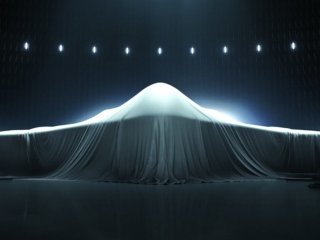The Long Range Strike Bomber: Too Big to Lose?
The United States could be pricing itself out of high-intensity conventional conflict.
Writing in Forbes two years ago, Loren Thompson of the Lexington Institute argued that about $550 million would be cheap for a new bomber. The price of the LRS-B may be about half again as much as an A380 jetliner, and the latter need not penetrate air defenses. Retired Lieutenant General David Deptula of the Mitchell Institute has argued against dwelling on unit cost, asking instead, “How many targets can you kill with a couple of long-range bombers versus an armada of short-range aircraft?” The former is arguably cheaper. If those short-range aircraft came from an aircraft carrier, the full cost would be considerably greater, and the carrier itself is a big and concentrated target. But aircraft cannot absorb damage like ships, and the loss of a single bomber would still be very costly. With the LRS-B, is it too much so?
Since the bloody aerial battles of World War II, both the efficacy of individual bombers and the costs of losing those aircraft have grown dramatically. In 1940, the cost of a B-17 represented the per capita gross domestic (GDP) of 262 Americans; in 2015, the roughly $610 million cost cap on an LRS-B represents the per capita GDP of over 6,000. (Our calculations derive from cost data in Air Force Department fact sheets and GDP figures from the Commerce Department’s Bureau of Economic Analysis.) With a massive payload of precision weapons—perhaps scores of Small Diameter Bombs—the LRS-B could wreak far more damage. But if shot down before it reaches its target, the loss would be twenty-three times worse. Moreover, stealth bombers cannot be as rapidly built as B-17s were, so combat losses will be much harder to replace.
This means that a force built on F-22s, F-35s, and LRS-Bs could thus be what Byron Callan of Capital Alpha has called “a glass slipper”—impressive, yet fragile, and not rapidly scalable given lead times with that degree of design complexity. The long run danger, one could say, is that the United States could be pricing itself out of high-intensity conventional conflict. The USAF may not like the idea, but a spread of investment in aircraft types at different price points may be operationally important. Even as it buys F-35s and LRS-Bs, the service should seriously consider holding onto A-10s, F-16s or F-15s for less demanding missions. We are also beginning to hear talk about extending the capabilities of the manned fighters and bombers with accompanying squadrons of drones. Manned-unmanned teaming, after all, to be the forte of Deputy Secretary Work’s next offset strategy.
James Hasík is a senior fellow and Rachel Rizzo is a researcher at the Brent Scowcroft Center on International Security. This article originally appeared in Defense Industrialist.
Image: Northrop Grumman.

